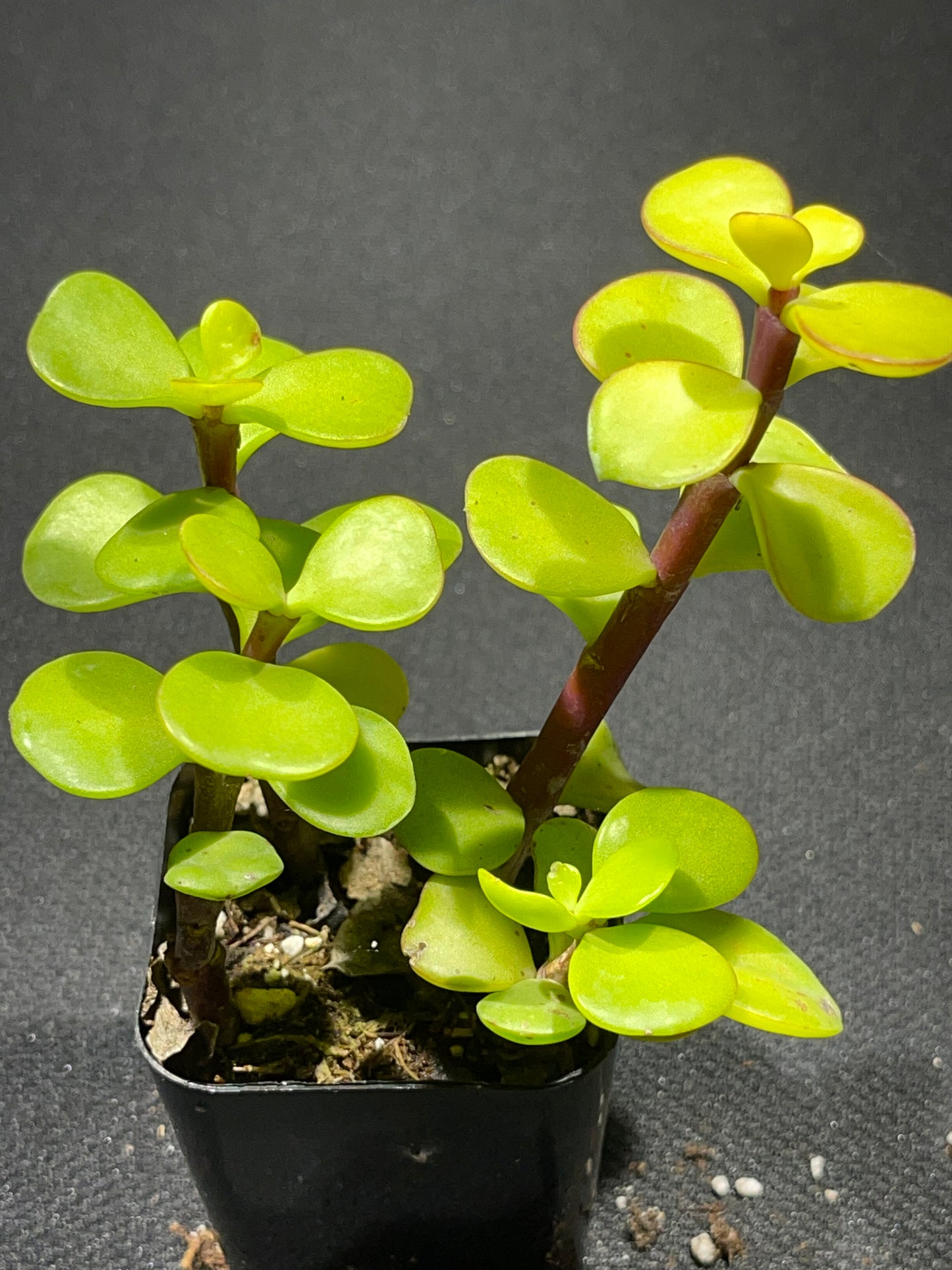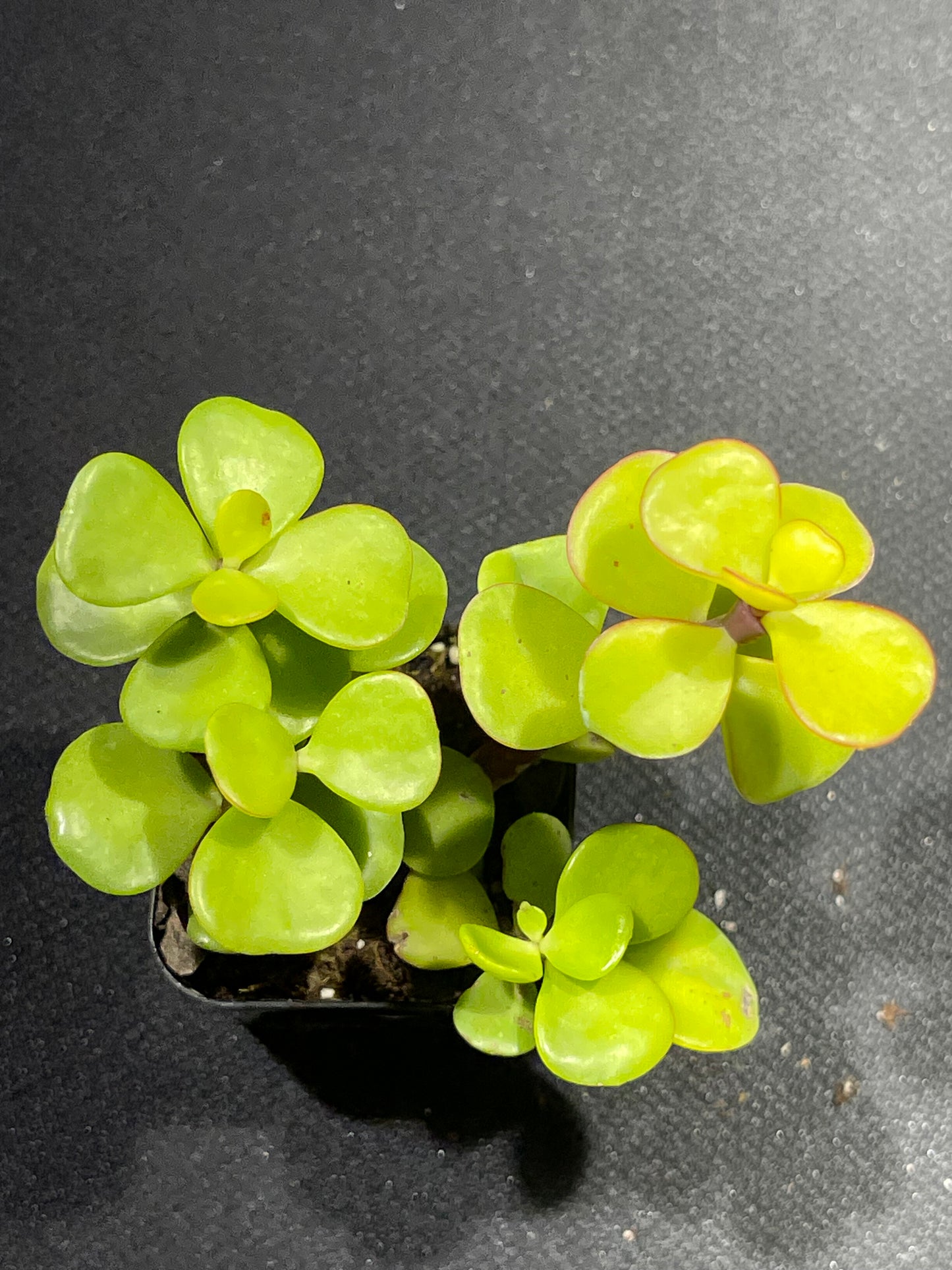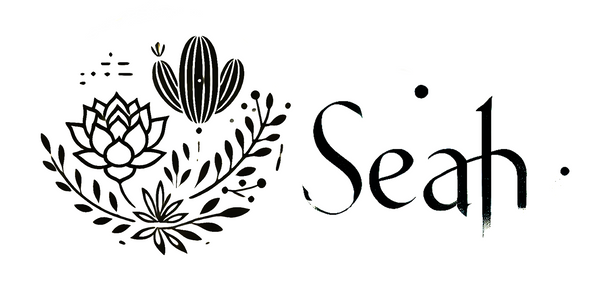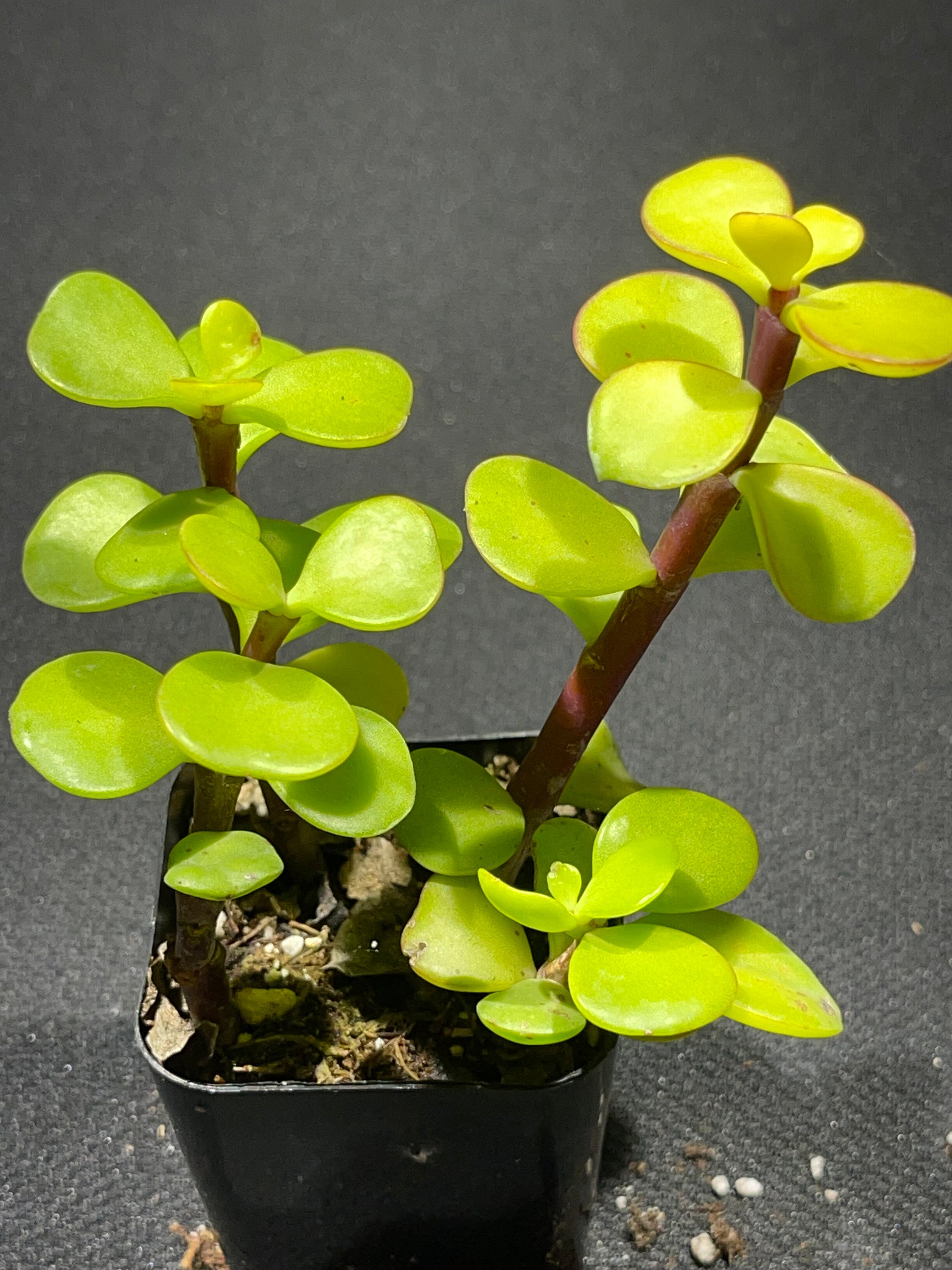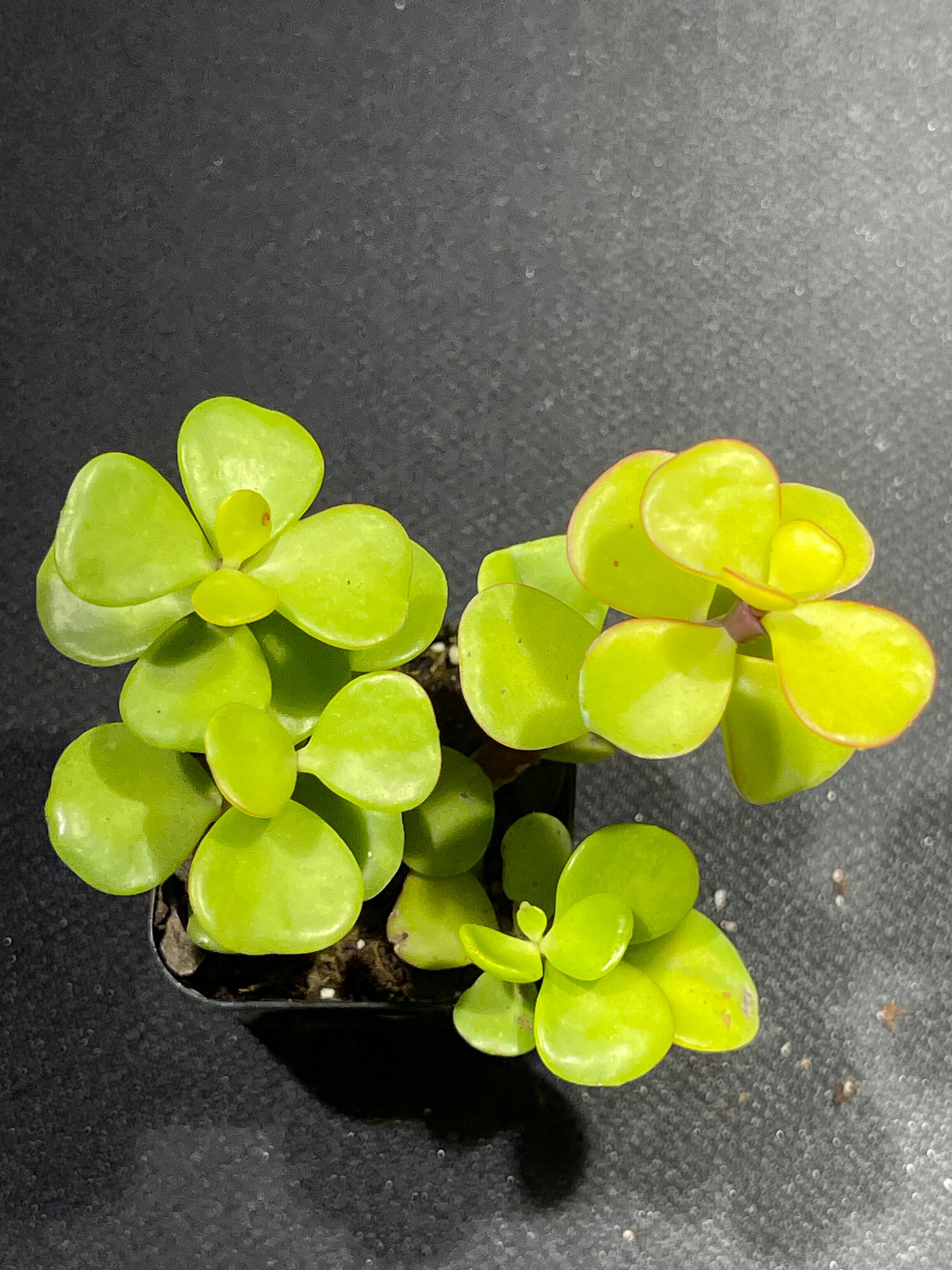Portulacaria afra - Elephant Bush
Portulacaria afra - Elephant Bush
In stock
Couldn't load pickup availability
📝 Description
Portulacaria afra, commonly known as Elephant Bush, is a succulent plant native to South Africa. It's well-regarded for its drought tolerance and is often used in bonsai. Here's a detailed examination of its characteristics:
Morphological Characteristics
- Leaves: Small, glossy, and jade green, the leaves are round to oval-shaped, growing densely along its branches. The leaves' succulent nature helps the plant store water, contributing to its hardiness in dry environments.
- Stems: The stems are reddish-brown, becoming woody and sturdy as the plant matures, allowing it to support a considerable biomass of leaves.
- Size: In its natural habitat, it can grow into a large shrub or small tree, reaching heights of up to 2-5 meters (6.5-16 feet). However, when grown in containers or as a bonsai, it remains much smaller.
- Flowers: Although flowering is rare in cultivation, it produces small, star-shaped pink or purple flowers during spring and summer when conditions are ideal.
Growth Habits
- Light: Prefers full sun to partial shade. Adequate sunlight is necessary for optimal growth and health.
- Temperature: It's heat tolerant but not frost-hardy. In regions with cold winters, it's best grown indoors or in a greenhouse.
- Water: Water moderately in the growing season but reduce watering in the winter. Allow the soil to dry out between watering to prevent root rot.
Maintenance Points
- Soil: Requires well-draining soil. A cactus or succulent mix is ideal.
- Pot: Ensure the pot has good drainage. Repotting every few years can help refresh the soil and accommodate the plant's growth.
- Fertilizer: Feed with a diluted succulent fertilizer during the growing season for best results.
- Pruning: Pruning can help maintain its shape, especially if grown as a bonsai. It also encourages bushier growth.
Reproduction Method
- Cuttings: The most common method of propagation. Stem cuttings can easily root when placed in well-draining soil. Allow the cuttings to callous over for a day or two before planting to improve success rates.
- Leaves: Leaf cuttings can also root, but this may be less reliable than stem cuttings. Place the leaves on the soil surface until they form roots and new growth.
- Seeds: Propagation from seeds is possible but less common due to the slower growth rate and longer time to maturity.
Portulacaria afra is not only admired for its aesthetic appeal but also for its environmental benefits, as it's capable of carbon sequestration, helping to combat climate change. Its ease of care makes it a popular choice among both novice and experienced gardeners.
🌿 Care Tips
Plant Care
Light
Water
Soil
Temperature
🌟 Note: It’s normal for succulents to appear slightly shriveled after shipping. They usually recover within a few days in a suitable environment.
📦 Shipping Info
Seah Shipping Policy
Effective Date: November 2025
This Shipping Policy applies to orders delivered within the continental United States (the lower 48 states). By purchasing from Seah, you agree to the terms below.
1) Shipping Cost & Free Shipping
- Automatic rate calculation: Shipping is calculated at checkout based on weight, destination ZIP and carrier rates.
- Free Standard Shipping: Orders $59+ (pre-tax, after discounts) ship free to the lower 48 states.
- Alaska, Hawaii, Puerto Rico & other territories: Not eligible for free shipping or standard flat offers at this time.
- Taxes/Duties: Applicable sales tax and any fees are shown at checkout.
2) Processing Schedule
- Business days only: We process and ship Monday–Friday. No shipping on weekends or U.S. federal holidays.
- Handling time: 1–3 business days after payment confirmation.
- Cut-off time: Orders placed before 3:00 PM (PST) are prioritized for same-day processing; others roll to the next business day.
- Changes/Cancellations: Email support@seah.co within 12 hours of purchase; after that, the order may already be in processing.
3) Transit Times
| Method | Estimated Transit | Total ETA (Handling + Transit) |
|---|---|---|
| Standard | 5–8 business days | 6–11 business days |
| Express | 3–4 business days | 4–7 business days |
ETAs are estimates. Weather, holidays, carrier delays or high-volume periods may extend delivery times.
4) Seasonal Temperature & Plant Safety
- Winter (Nov–Mar): We strongly recommend adding a heat pack at checkout to protect plants from freezing. Orders shipped without a heat pack during cold conditions are not covered for cold damage.
- Summer heat: During extreme heat waves, we may hold shipments until temperatures normalize. We’ll notify you if there’s a hold.
- Packaging: Plants are carefully packed (bare-root or potted by type/size) to minimize transit stress.
5) Carriers & Tracking
- We ship via USPS / UPS / FedEx, selected automatically for best service to your address.
- When your order ships, you’ll receive a tracking email. Tracking typically activates within 24 hours.
- If you haven’t received tracking within 3 business days, contact us at support@seah.co or +1 (626)-999-1314.
6) Address Changes & Delivery Issues
- Before shipment: Request address changes within 12 hours of ordering.
- After shipment: We can’t modify the address once dispatched. Please contact the carrier for redirection options.
- PO Boxes: Supported for USPS only; UPS/FedEx require a street address.
- Seah isn’t responsible for delays or loss due to incorrect addresses provided at checkout.
7) Service Area
We currently ship to the continental U.S. (lower 48 states). Orders to AK/HI/PR and other territories are not eligible for free shipping and may be restricted.
8) Support
- Hours: Mon–Fri, 9:00 AM – 5:00 PM (PST)
- Phone: +1 (626)-999-1314
- Email: support@seah.co
- Address: 7870 Margaux Pl, Rancho Cucamonga, CA 91739, United States
Thank you for supporting our California nursery—each plant is hand-selected and packed with care. 🌱
